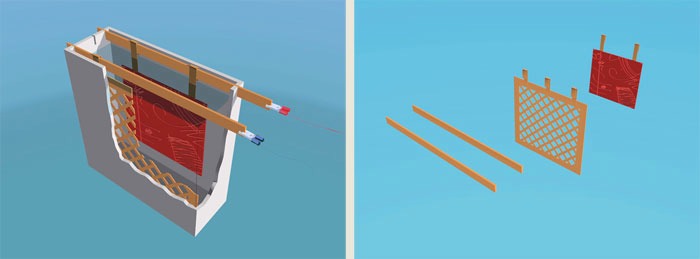Since the 1980s a real change has taken place in traditional etching. Printmakers became aware that materials used in workshops and art schools were harmful to health and the environment. Research was focused in several areas: Acid mordants were replaced by sulfate and salt mordants or by etching with electricity - free of toxic fumes. Methanol based varnishes were replaced by acrylic and oil based resists. Rosin and asphaltum powders were replaced by acrylic sprays. Hydrocarbon solvents used for cleaning plates and inks were replaced by vegetable cleaning agents (VCA) and cheap oil-seed products.
Old processes were rediscovered and new methods were incorporated using modern materials such as polymers for the practice of intaglio, digital and laser processes etc. Virtually all these techniques have proved popular with those printmakers who are more health-conscious and environmentally sensitive, and amongst those who are more curious and eager to experiment.
Fortunately, these alternative processes have been gradually spreading across the world of modern print arts. More and more publications, and websites, now feature extensive information about many of these alternative methods.
Among the rediscovered techniques is electro-etching, developed in the 19th Century by Thomas Spencer and then almost forgotten in the printmaking world. Why, I do not know. But now it has been revived through its association with safe or low-risk modern printmaking, thanks to research by Nik Semenoff, Cedric Green, Marion and Omri Behr, and the workshop of Ole Larsen (where I had the opportunity to begin my own research into the technique). These printmakers have been testing and demonstrating the usefulness and safety of electrolytic processes for etching.
The reinvigorated technique offers a wide range of new features, graphics and innovative possibilities but has not enjoyed the same spread or level of acceptance as other non-toxic processes - perhaps because of an unfounded fear of electricity, or the apparent "expensive paraphernalia" to set up an electro-etching unit. In truth, the electrical "know-how" is very simply, and you do not need expensive equipment.
I believe that electro-etching is a 21st Century technique that's here to stay! And I hope to contribute to its revival and popularity by showing how with these easy instructions.

3D drawing of electrolytic tank Electrodes, cathode grid and plate to be etched
NEXT - The Fundamentals of the Electrolytic Processes and Electro-Etching